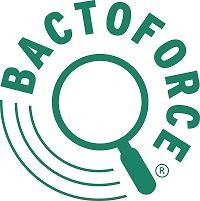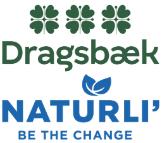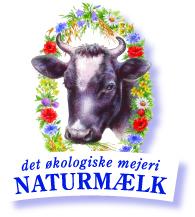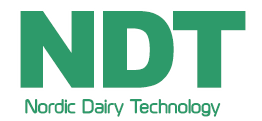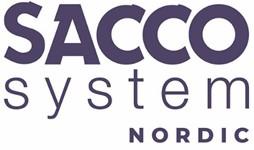 For a long time, the dairy industry has manufactured products with plant ingredients such as soft ice cream mix with palm oil and spreadable blends with a proportion of rapeseed oil added. However, the sustainability agenda has accelerated consumers’ desire for even more products with vegetable raw materials. In some Danish homes, not only blends, but also pure plant products such as soy and oat drinks have become commonplace causing the dairy industry to continuously keep abreast of new trends and opportunities in the field.
For a long time, the dairy industry has manufactured products with plant ingredients such as soft ice cream mix with palm oil and spreadable blends with a proportion of rapeseed oil added. However, the sustainability agenda has accelerated consumers’ desire for even more products with vegetable raw materials. In some Danish homes, not only blends, but also pure plant products such as soy and oat drinks have become commonplace causing the dairy industry to continuously keep abreast of new trends and opportunities in the field.
The seminar will focus on the latest developments within products, product technologies, and processes in the field, to include the problematics associated with having milk and plant-based products interact at the dairy. The challenges, which can be technical, allergen-related, etc., in nature, are key. In addition to elucidating these technologies and product technical themes, the seminar will also focus on the sensory quality of blends and plant-based products, to include the work related to making these products match the traditional dairy products.

How to cope with a more plantbased future
We must change our eating habits to a more plant-based diet. That is the message we hear over and over from politicians, scientists and activists. We have to make that change, both for sake of the climate and to ensure our own health.
The market for plant-based foods is growing explosively, and new products are launched almost daily. In addition to that, even more animal-based manufacturers are starting to make plant-based products. And that is probably necessary if they still want to have a production in 10, 20 years. But what exactly are plant-based foods? How is it regulated? What are the barriers? How can it be exported? And is there actually a demand for plant-based foods from consumers?
We will try to shed light on that, as well as a number of other things, at this seminar on plants and milk. We will also touch on the special protected names for milk products. We will discuss taste, sensory, fermentation, and new technologies, as well as the government's action plan for plant-based foods, export strategy, the Plant Foundation.

Towards cheese structures using protein-based gels produced by fermentation
Plant protein-based gels can have an important structuring role in the development of products such as high protein dairy alternatives, however their production and properties using different seed protein and plant oil sources is still largely unknown. We focus on the gelling potential and properties of the resulting fermentation-induced gels prepared from faba bean protein isolate (FPI) and pea protein isolate (PPI) emulsion. Emulsions were prepared with a final protein content of 10% and 10% rapeseed oil. In general, FPI appeared to produce harder (by ≈25%) gels on all investigated conditions.
The effect of different lipid sources on emulsions stability and on gel structure was also evaluated. Sunflower oil, oleosomes, oleogel, and coconut oil, were included in PPI emulsions that were further fermented into gels and compared to a dairy fresh cheese. The different fat sources did not have any significant effect on emulsion stability also no significant differences were found between the rheological properties of the pea protein gels containing oil, oleosomes, and oleogel and the dairy cheese of reference. Interestingly, the protein network seems to be a dominant factor for gel firmness.
How flavors can improve plant base products
 The market for Plant-based dairy alternatives have experienced a significant growth and it will continue to grow for very good reasons: environmental impact, health & nutrition and ethical choice for consumers with animal welfare concerns. But there is still a key element holding a significant part of consumers back from moving to this category: Taste! These taste challenges are often linked to protein sources, food composition and processes used to make those foods. Flavoring can be a great tool to overcome these challenges.
The market for Plant-based dairy alternatives have experienced a significant growth and it will continue to grow for very good reasons: environmental impact, health & nutrition and ethical choice for consumers with animal welfare concerns. But there is still a key element holding a significant part of consumers back from moving to this category: Taste! These taste challenges are often linked to protein sources, food composition and processes used to make those foods. Flavoring can be a great tool to overcome these challenges.
Combining Flavoring with modifying properties can be used to reduce bitterness, increase the mouthfeel perception, enhance juiciness, mask the undesired off notes, and bring authentic taste to the plant proteins. Recognizing how we perceive the food and deep understanding of taste receptor mechanism helps to select what are the most relevant taste modulator to overcome specific taste challenge. These flavors can be used to enhance the eating/drinking experience, increase acceptability and drive liking of plant base products.
In Europe most of the consumers still compare plant-based alternatives to traditional dairy products while flexitarians are driving the growth to PB category. Flavors can play an important role to meet those authentic taste expectations. Looking at the natural flavor composition of dairy products, we can recreate those dairy notes for example trying to mimic milk or yogurt profile.
Understanding consumer expectations in this area is key to develop successful products. Did you know that expectation in flavor tonality for plant base product is different than for dairy? Some tonalities are also simply better performing in dairy alternative than others. There are numerous insights to take in consideration when developing your next plant based dairy product.

How to convert from milk to plant-based
Many dairy producers want to explore the growing plant-based beverage segment. There are multiple ways to approach that – of different complexity. One is to invest in a completely new line, another is to convert an existing dairy line for plant-based products. Some of the processing steps are the same for milk and plant-based beverages, while others are different. Converting a UHT milk line to produce plant-based beverages requires a thorough assessment of the existing processing line and food technology insights how the new products will perform in the system. The seminar will take you through how to produce plant-based beverages starting from different types of raw materials and highlight some of the fundamental differences between processing dairy milk and plant-based beverages.

Microbial challenges in plant-based dairy alternatives
Plant-based dairy alternatives are produced from many different raw materials and thus may harbour a diverse variety of microorganisms. In addition, the raw materials for plant-based products can have different rheological characteristics and solubilities affecting the heat processing and inactivation of contaminants present. Microbial challenges related to microorganisms contaminating plant-based products can include spoilage caused by bacteria, yeasts and moulds, or food-poisoning caused by spore-forming bacteria. The selection of appropriate microbial food cultures may help delaying the spoilage of fermented plant-based dairy alternatives as well as reducing the risk of food poisoning by spore-forming bacteria.

Detection of allergens in the food industry
Milk allergens are proteins that the immune system of allergic individuals mistakenly recognizes as harmful. Upon consumption, they trigger allergic reactions, which may range from mild to life-threatening anaphylactic shocks. Milk proteins, represent an ever-present risk for individuals with allergies, it is critical for food producers to count with appropriate allergen management plans that count with routine tests for potential contaminations in their products and production lines. There are currently only few analytical methods available to the food industry for this purpose.
Furthermore, plant-based drinks or spreads, common in the dairy industry, can be particularly challenging. In some cases, for particular cross-reactivity issues, but also because of their composition, which can present with multiple matrix-effects. Lateral flow devices are the go-to option for fast on-site testing. They represent a fast and simple qualitative solution to monitor the efficacy of processes aiming to control the presence of milk proteins, like proper compartmentalization and cleaning. Enzyme-linked immunoassay methods (ELISA) are the current best tool to evaluate quantitatively the allergen content in raw materials but also in intermediate and end products. Nevertheless, selection of the appropriate method requires careful analysis, and in many cases close collaboration with the methods developers, and tailoring of the methods themselves.

Which cleaning challenges arise due to the growth in processing plant-based/mixed products in dairies?
Plant-based alternatives to milk have become more popular for health, ethical, and sustainability reasons and increasingly for consumers with allergies or intolerances. In short, demand has exploded.
Plant-based dairy products include a range of options like soy, coconut, oat, hemp, rice, quinoa, pea, nuts, seed and their profiles differ from cow-milk on their content of fatty acids (saturated versus unsaturated fat), protein, minerals and starch.... Furthermore, the formulation of these products might include stabilizers, flavors, and other additives.
What does this mean from a cleaning perspective (ensuring high food safety)?
Well, additives to milk are not a new thing – black cumin, chili etc. added to cheese, spreadable butter products made from churned butter mixed with oil (soybean oil, rapeseed oil)… etc. – these have been produced for many years.
Ronni Rasmussen, will share his considerations regarding hygiene solutions when milk and plants are processed together, and how to ensure that there is no contamination from allergens.
He will take you through some cleaning aspects where well-known hygiene practices and common sense form the basis for developing cleaning solutions to the growing demand for plant-based products.

Fast analytical tools for Product Development and Quality Assurance in Plant-Based Dairy
As the demand for plant-based dairy continues to rise, solutions for rapid analysis of critical parameters are becoming increasingly important in product development and quality assurance. Existing spectroscopical solutions are already widely used withing the dairy industry, so why not use the same equipment and techniques for plant-based dairy?
However, calibrating spectroscopic solutions for plant-based drinks can be challenging due to the complexity and variability of these products, as well as the lack of standardization in reference analyses and variations in raw materials used during production.
This presentation will go over the value chain and control points for plant-based drink production from a Foss perspective and give insights on the development of the calibration work done on plant-based drinks so far. There will also be some insights into the continued work on plant-based dairy solutions and how Foss works with new products.

How to investigate the environmental impact of dairy products and their plant-based alternatives using life Cycle Assesment(LCA)
In order to mitigate the climate and environmental impact of dairy products and compare to potential new or alternative products, it is necessary to first investigate what the current impacts are. This can be done using a method called Life Cycle Assessment (LCA). Using a novel plant-based yoghurt substitute based on peas and faba beans as a case study, this talk will focus on LCA on dairy products and their plant-based alternatives to highlight some of the challenges and intricacies of performing such an assessment which can support a fair comparison. Perspectives will also be presented on how the methodology can be extended to hybrid products and where it might fall short.




